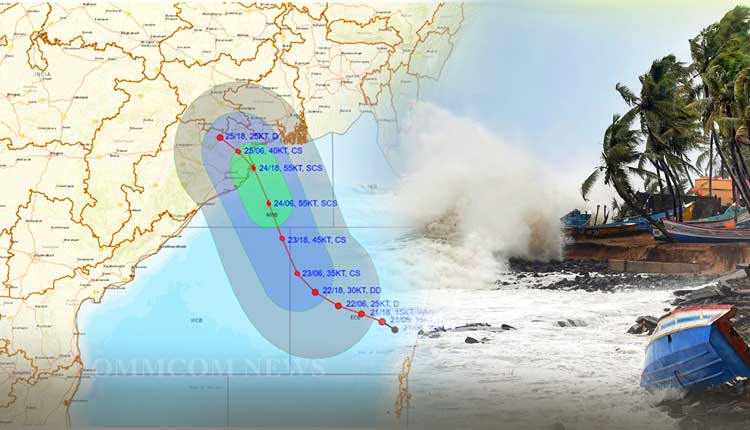
A deep depression over the Bay of Bengal has intensified into Cyclone Dana, with landfall expected between Puri, Odisha, and Sagar Island, West Bengal, in the early hours of October 25. As the severe cyclonic storm approaches, preparations have intensified across West Bengal and Odisha, with the cancellation of 197 trains and closures of educational institutions in vulnerable regions.
According to the India Meteorological Department (IMD), Cyclone Dana is expected to hit the coasts with wind speeds ranging from 100 to 110 kmph, gusting up to 120 kmph. Fishermen have been advised not to venture into the sea from October 23 to 25, as wind speeds could reach 60 kmph along the coastlines.
The governments of both states have taken extensive measures to mitigate the effects of the impending cyclone. In Odisha, Revenue and Disaster Management Minister Suresh Pujari announced that over 5,000 relief centers have been set up, equipped with essential supplies such as food, water, medicines, and backup power. Pujari stated, “We are expecting to evacuate around 10 lakh people from vulnerable areas to ensure safety.”
The Indian Coast Guard (ICG) is on high alert, mobilizing ships, helicopters, and other resources to assist with rescue and relief efforts. Coordination is underway with disaster management authorities in both states to ensure an effective and swift response. Helicopters and remote operating stations have been deployed in Haldia, West Bengal, and Paradip, Odisha, to broadcast weather warnings to local fishermen and mariners.
Odisha Chief Minister Mohan Majhi has directed all ministers and MLAs to be present in their constituencies, urging them to assist in cyclone management and relief operations. He emphasized the need for local officials to work closely with district administrations to expedite rescue efforts and provide necessary support to affected populations.
West Bengal Chief Minister Mamata Banerjee has also assured the public that her government is fully prepared to face the cyclone. Schools and colleges in seven districts, including Kolkata, will remain closed from October 23 to 26 as a precautionary measure. Banerjee stressed the importance of minimizing risk and confirmed that educational institutions may be used as temporary shelters for displaced people.
“People residing in low-lying areas have been asked to relocate to safer locations,” Banerjee said. The National Disaster Response Force (NDRF) has deployed 13 teams across West Bengal to manage any potential emergency situations arising from the cyclone.
In Kolkata, airport authorities have initiated safety protocols, including inspection and servicing of airport infrastructure, drainage systems, and other installations. They aim to ensure minimal disruption in air travel and airport operations during and after the cyclone.
The Indian telecom sector has also assured the Odisha government that communication networks will not collapse, while Tata Energy has committed to maintaining round-the-clock power supplies, with contingency plans for backup power in case of disruptions.
As Cyclone Dana looms, the priority for both states remains the safety of their citizens. Authorities have urged people in high-risk areas to remain vigilant and cooperate with local officials during evacuation and relief operations.
With relief centers ready and coordination across various departments and agencies, West Bengal and Odisha are bracing for the impact of Cyclone Dana as it inches closer to landfall.
